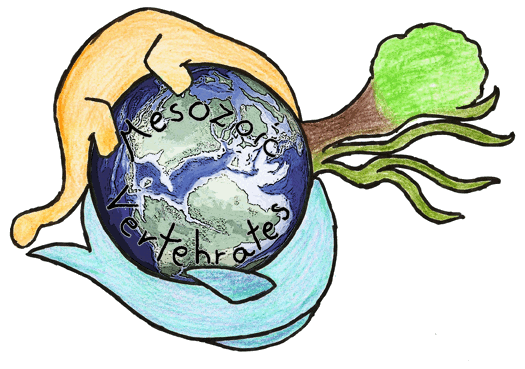

Mesozoic Tetrapods
Oliver Rauhut Lab
Current Research Projects
Research at the Mesozoic Tetrapods Research Group includes projects on many different aspects of Mesozoic tetrapod anatomy, taxonomy, evolution, and biogeography. Some of the most important individual research projects are introduced here.

Vertebrates from the Jurassic of Patagonia
The Jurassic is a crucial period for our understanding of the evolution of vertebrates. Many important groups experienced their first major radiation during that time. However, our understanding of these important evolutionary events is almost exclusively based on the fossil record of the Northern Hemisphere, and Middle and Late Jurassic vertebrate localities from the Gondwanan continents are rare. Chubut Province in Argentinean Patagonia has terrestrial sediments of both the latest Early to Middle Jurassic (Cañadón Asfalto Formation) and Late Jurassic (Cañadón Calcáreo Formation ) age. These units are very fossiliferous and have yielded important evidences on the Jurassic evolution of vertebrates, such as the oldest abelisaur, the first Jurassic mammals from South America or the first Jurassic terrestrial crocodile from that continent. The ongoing exploration of these units is thus certain to yield many interesting new insights.

Faunal dynamics of the Solnhofen Archipelago
The Late Jurassic (Kimmeridgian-Tithonian) plattenkalks of the Solnhofen Archipelago represent a unique window into a shallow marine tropical environment at that time. These rocks are famous for their exceptionally preserved fossils, which have long been known as outstanding evidences for animal evolution in the Jurassic. What is less well known is that the fauna that is often collectively known as "Solnhofen fauna" in fact represents several separate depositional basins that span 1.5 to 2 million years. Thus, these rocks represent a unique opportunity to study the evolutionary dynamics of vertebrates in a tropical archipelago over a geologically short time span in deep time. As such environments are biodiversity hot spots today, understaning their evolutionary dynamics has implications beyond the understanding of Jurassic vertebrate evolution.

Jurassic dinosaurs from Europe
Although the continent was largely flooded over long periods during the Mesozoic, Europe plays an important biogeographic role during that time. In the changing world of the fragmenting supercontinent of Pangea, Europe was the central region between Asia, North America, and the Gondwanan continent, and influences from the different regions are noticeable in European faunas at different times. A recent analysis of dinosaur biogeography indicated that faunashad the highest conectivity during the Late Jurassic, with Europe representing a turntable of dinosaur biogeography during that time. Looking at dinosaurs from the Middle and Late Jurassic of Germany and the Late Jurassic of Spain, we try to elucidate the significance of European Jurassic dinosaur faunas for our understanding of the Jurassic evolution of that group.